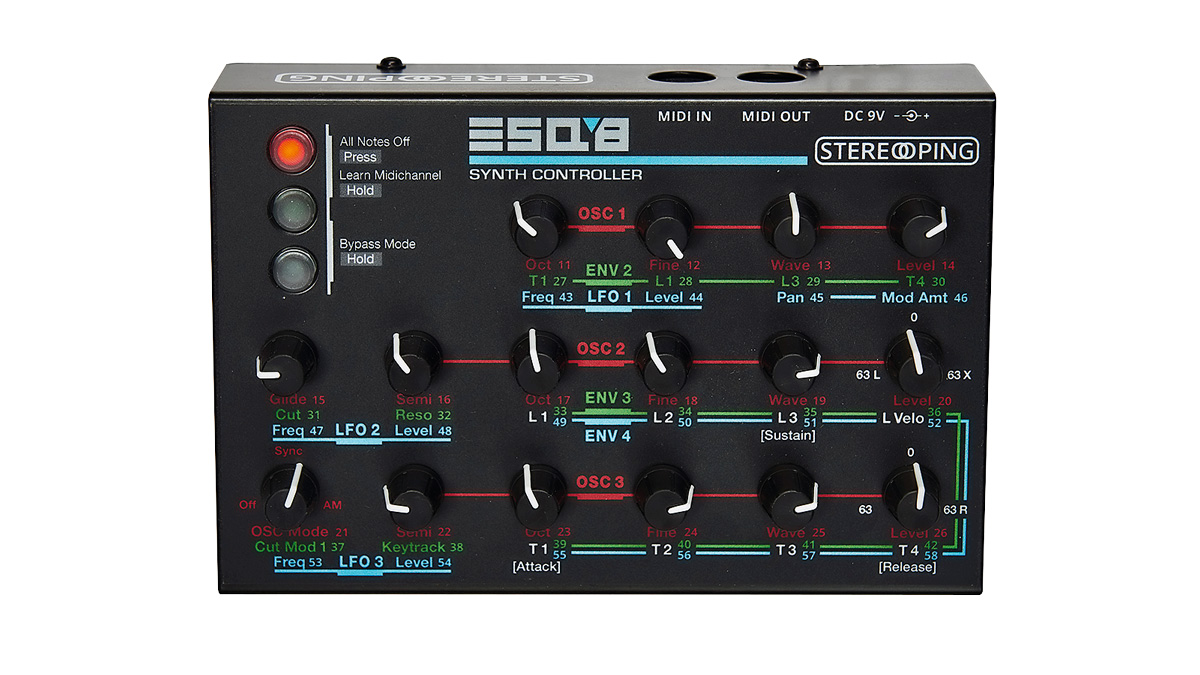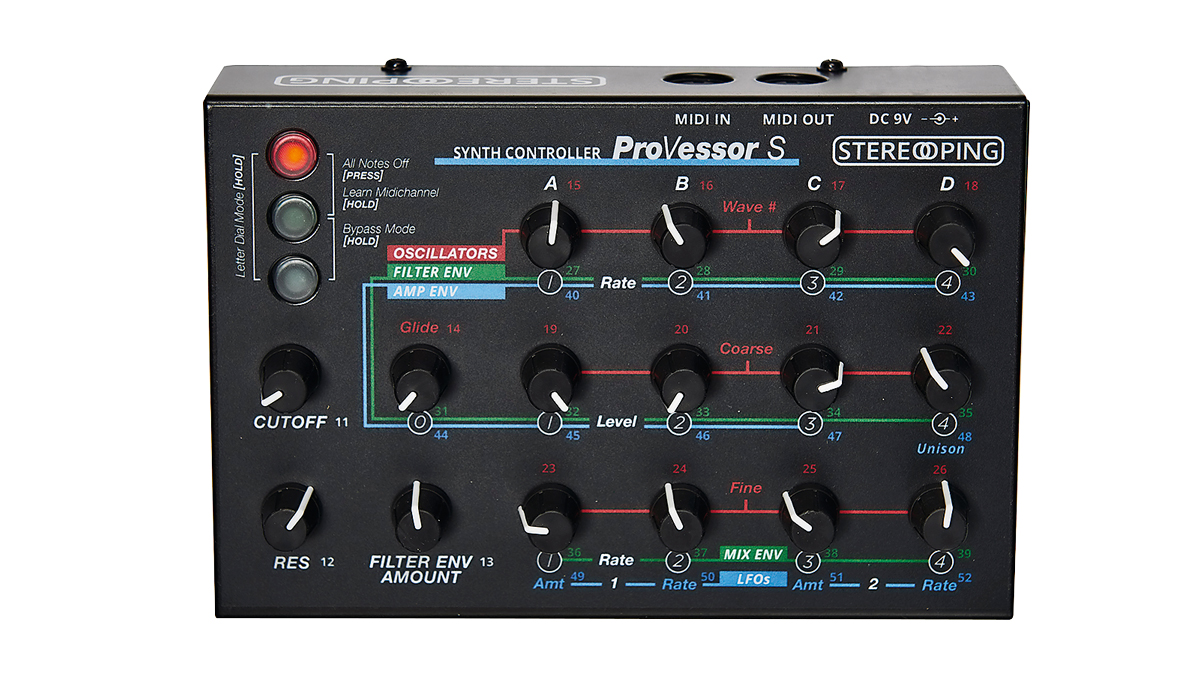MusicRadar Verdict
Boasting the size, simplicity, flexibility and usefulness you need, the Stereoping controller could be the tool to free you from screengazing.
Pros
- +
Minimal setup.
- +
Easily reprogrammable for an ever-increasing range of synths.
- +
Converts incoming MIDI CC into SysEx for immediate parameter automation.
Cons
- -
Cannot switch quickly between different synth ‘editions’.
- -
Complex synth designs will still require an additional editing system.
MusicRadar's got your back
Back in the 1970s, most synthesizers featured a knob or slider for each parameter.
By the mid ’80s, the introduction of affordable microprocessors meant that many synths featured little more than an LCD screen, a smattering of buttons, and a solitary data slider. It reduced costs and democratised music technology, but it also made for less- than joyous programming experience.
MIDI-based software editing eventually came to the rescue, and the advent of the DAW and virtual instruments meant that synths, samplers and drum machines could be complex yet accessible.
Fully tactile, multiparameter engagement was still limited, which in turn led to the exploration of hardware control options to get around the monotonous mouse-based click and drag process. This brings us neatly to the Stereoping Synth Controllers on test, which are largely - but not exclusively - aimed at the keyboard and rack synths of the mid ’80s onwards, bringing them under the control of 16 onboard knobs.

There are currently 25 different ‘flavours’ of controller, though they are all built on the same functional base of three backlit buttons and 16 rotary pots. The buttons are used to select between three knob/parameter banks, with parameters colour-coded on the front panel for easy reference. Communication is carried out via the MIDI ports on the rear, with the Stereoping units sitting between your DAW, or keyboard controller, and the synth to be controlled.
Each version comes with its own synth-specific front panel, and with the knobs pre-programmed to send appropriate SysEx messages for the unit in question. Although the Stereoping units are not fully user-configurable controllers, the internal firmware can updated to change their capabilities from one synth to another.
...the Stereoping Synth Controller is quick and easy to use, with some powerful features hidden inside its steel case
Matching front panel layouts, are also available as to download and print - and Stereoping also sell professionally printed versions too. In use, the controllers are largely plug-and-play. Using the ‘ProVessor S’ version, we had our Prophet VS responding to parameter changes immediately. One nice feature here is that a single button press also configures the Prophet’s MIDI options via SysEx in preparation for full parameter control.
Want all the hottest music and gear news, reviews, deals, features and more, direct to your inbox? Sign up here.
Even with the relatively straightforward editing system on the VS, the Stereoping controller made things far more fun. A big added bonus is the automatic mapping of incoming CC messages to each panel parameter, allowing the synth to be automated from a DAW.
The Prophet VS responds to parameter changes in real time, though the Ensoniq ESQ-1 (partnered here with the ‘ESQ8’ controller) only updates its sound engine between notes - so results are dependent on the synth in question. There are cheaper synth editing solution, but the Stereoping Synth Controller is quick and easy to use, with some powerful features hidden inside its steel case.
